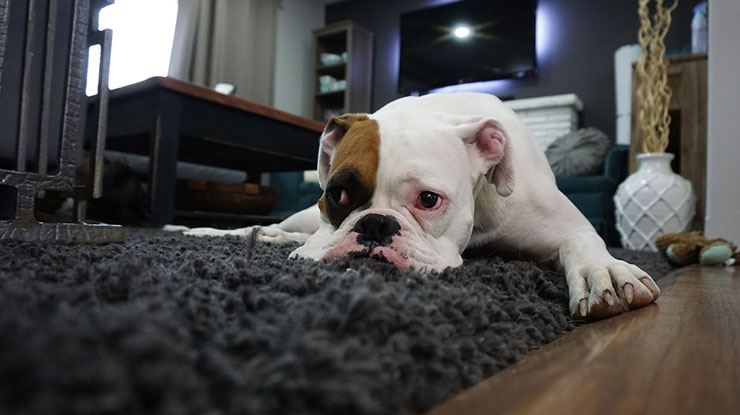
How to Avoid Common Home Hazards for Your Dog
Our dogs are truly members of our families. Around 85 million households in America, so about 68% of them, have at least one pet. Keeping our dogs safe may seem simple, but plenty of common household products and other items exist that can put our pups in danger. Here are eight common home hazards for dogs, as well as how you can avoid them in your house.
1. Houseplants
Houseplants do wonders for the aesthetic and air quality of our homes, but they can be dangerous to dogs and cats that like to gnaw on things that aren't exactly food. Many common houseplants are poisonous to animals.
If you have any of the following plants in or around your home, consider getting rid of them or moving them to a location where your pets can't get to them:
- Sago palm
- Spider plants
- Poinsettia
- Elephant ear
- Dieffenbachia
- Oleander
- Easter lily
Many other potentially poisonous plants exist, so be sure to do your research before bringing any new plants into your house.
2. Cleaning Products
Household cleaning products and other chemicals you use in your home—such as detergents, soaps, antifreeze, pesticides, windshield washer fluids and more—can be toxic to your dogs. Store these types of products in a location where your pets can't see, smell or access them.
3. Certain Food Items
While chocolate, candy and macadamia nuts are all delicious treats for humans, they're not safe to feed to your pet. As a dog owner, you should always be aware of any food items left within reach of your pup—especially a sneaky one! Even seemingly "safe" foods like grapes, milk and meat bones may seem like fun treats, but they can actually be poisonous to animals.
4. Electrical Shocks
Electrical shocks are typically mild but can be much worse for your pet, especially if it's easily triggered by a device or outlet, or if electrical cords are easily accessible. Keep your four-legged friends safe at home by using outlet covers and keeping loose cords out of reach rather than leaving them dangling free.
5. Medications
You may already keep your personal medicine put away in a cabinet or under a bathroom sink. But, even pet medicine can be toxic to your dogs and cats if they accidentally consume too much of it. Where do you store your pet's medication? If it's in a spot where they may be able to get into it, move it somewhere safer. You should also be sure you always follow the proper dosage directions of any prescribed pet medicine.
6. Razors and Sharp Utensils
Even people need to be careful with sharp knives and razors, but dogs don't know they need to be careful with these dangerous items. If you keep your razors in the bathroom on a low shelf or even in the tub, there's a chance your dog could mistake it for a piece of candy or chew toy. Be sure to keep these sharp items in high-up areas that even a cat can't get to.
7. Choking Hazards
Think about all of the tiny objects that could end up on our floor without us even realizing it. Paper clips, jewelry, bobby pins, push pins and more are all innocent household items that could be extremely dangerous if your dog tried to make a snack of them. Batteries are another toxic small item that our pups could try to chew on, too. Be sure to keep all small items that could be choking hazards stored securely in drawers and cabinets where your pets can't get to them.
Take Precautions to Keep Your Furry Friends Safe
The short amount of time humans get with their pets is almost never enough. When you pay attention to potential risks such as these eight common household hazards, you'll be able to maximize that time and keep your best friends healthy and safe for as long as possible.
Emily is a freelance wildlife conservation and pet blogger. To check out more of her work, see her blog, Conservation Folks, or follow her Twitter account @emilysfolk










